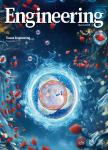版权所有:内蒙古大学图书馆 技术提供:维普资讯• 智图
内蒙古自治区呼和浩特市赛罕区大学西街235号 邮编: 010021

作者机构:School of Science and EngineeringChinese University of Hong KongShenzhenShenzhen 518172China School of Computer Science and TechnologyUniversity of Science and Technology of ChinaHefei 230027China Shenzhen Institute of Artificial Intelligence and Robotics for SocietyShenzhen 518172China School of Electrical and Information EngineeringTianjin UniversityTianjin 300072China School of Electrical Engineering and TelecommunicationsUniversity of New South WalesSydneyNSW 2052Australia
出 版 物:《Engineering》 (工程(英文))
年 卷 期:2020年第6卷第7期
页 面:789-800页
核心收录:
学科分类:080802[工学-电力系统及其自动化] 0808[工学-电气工程] 08[工学]
基 金:the Training Program of the Major Research Plan of the National Natural Science Foundation of China(91746118) the Shenzhen Municipal Science and Technology Innovation Committee Basic Research project(JCYJ20170410172224515)
主 题:State estimation Low-frequency data High-frequency data Super resolution perception Data completeness
摘 要:The smart grid is an evolving critical infrastructure,which combines renewable energy and the most advanced information and communication technologies to provide more economic and secure power supply *** cope with the intermittency of ever-increasing renewable energy and ensure the security of the smart grid,state estimation,which serves as a basic tool for understanding the true states of a smart grid,should be performed with high *** complete system state data are needed to support high-frequency state *** data completeness problem for smart grid state estimation is therefore studied in this *** problem of improving data completeness by recovering highfrequency data from low-frequency data is formulated as a super resolution perception(SRP)problem in this paper.A novel machine-learning-based SRP approach is thereafter *** proposed method,namely the Super Resolution Perception Net for State Estimation(SRPNSE),consists of three steps:feature extraction,information completion,and data *** studies have demonstrated the effectiveness and value of the proposed SRPNSE approach in recovering high-frequency data from low-frequency data for the state estimation.